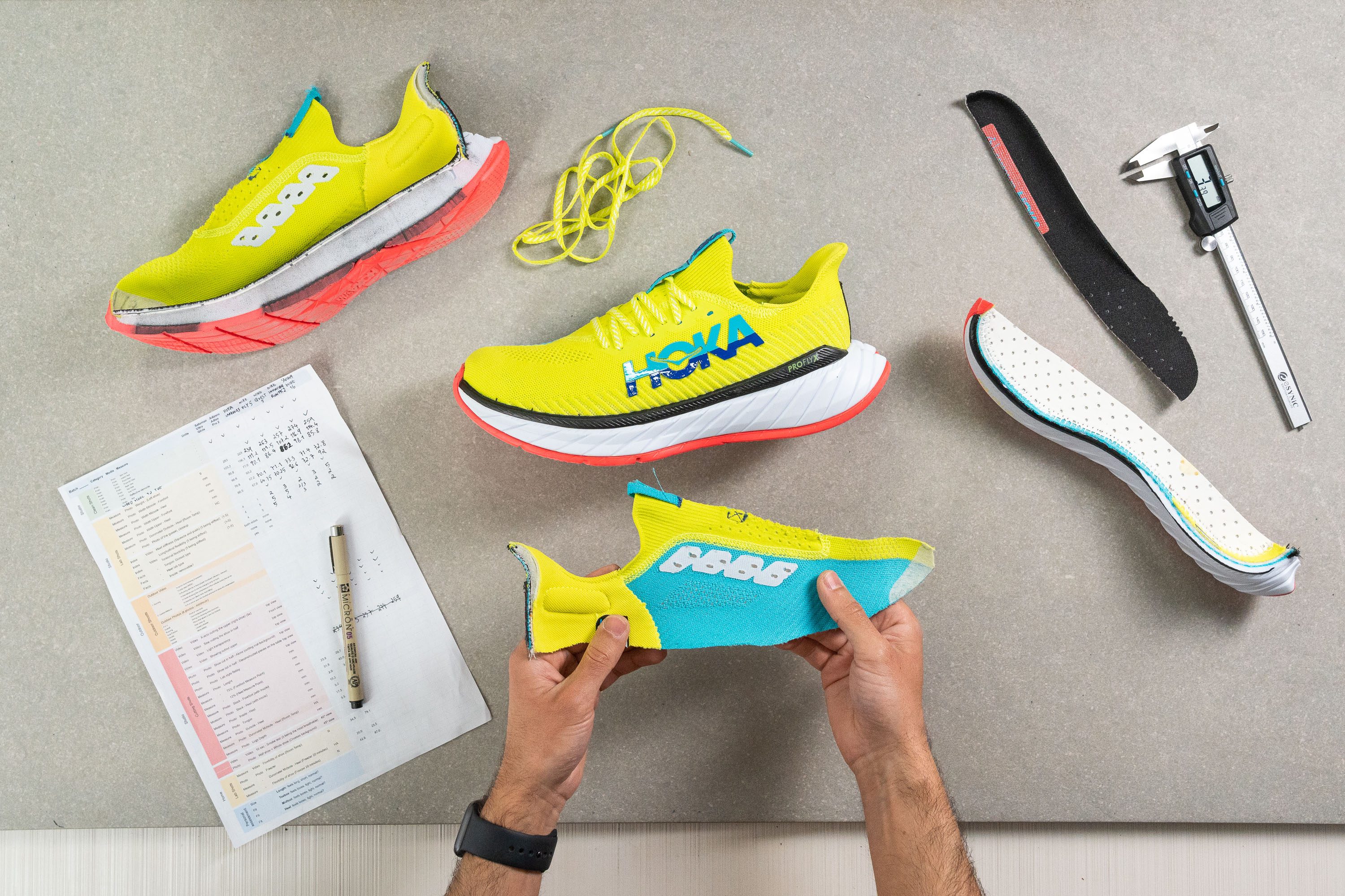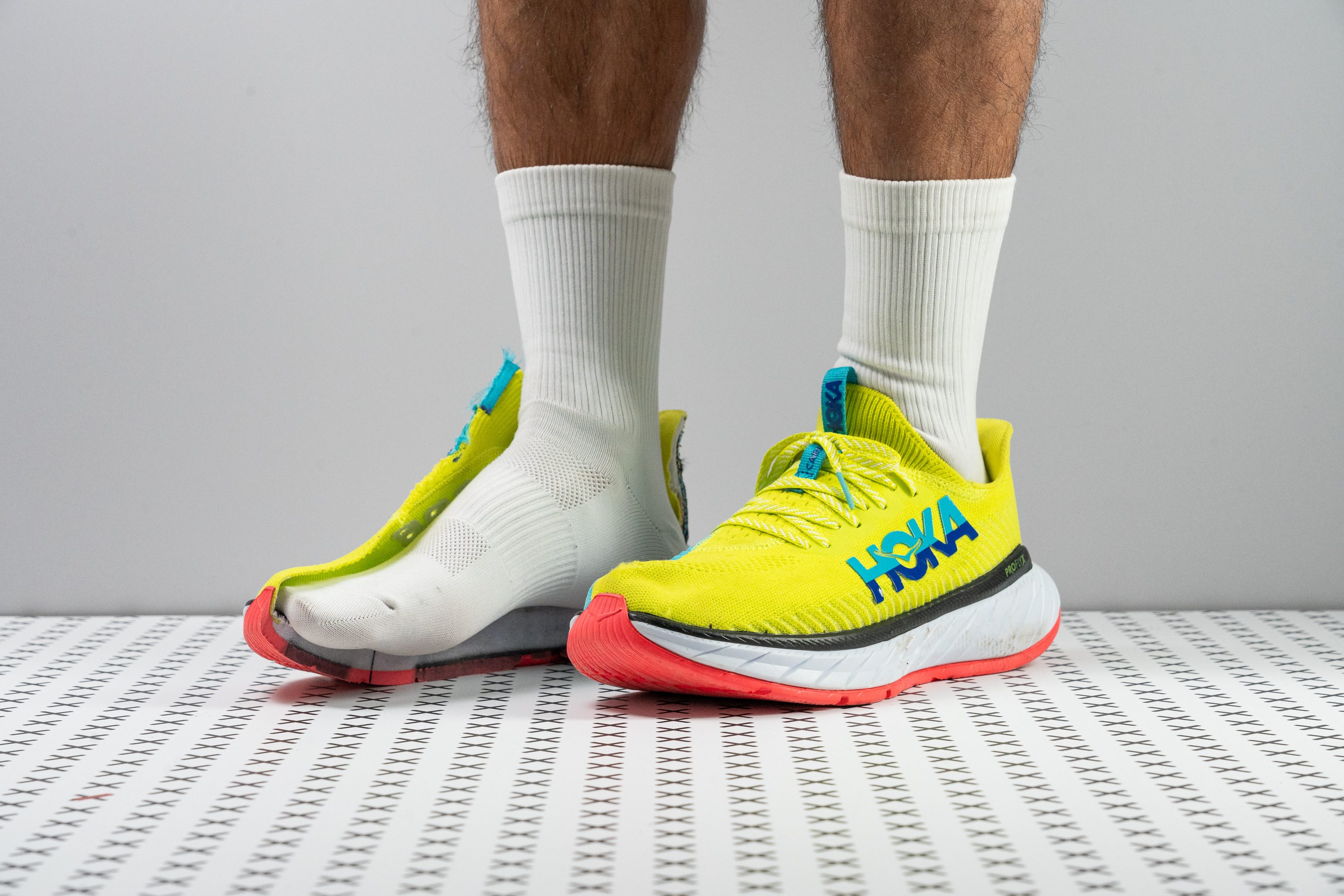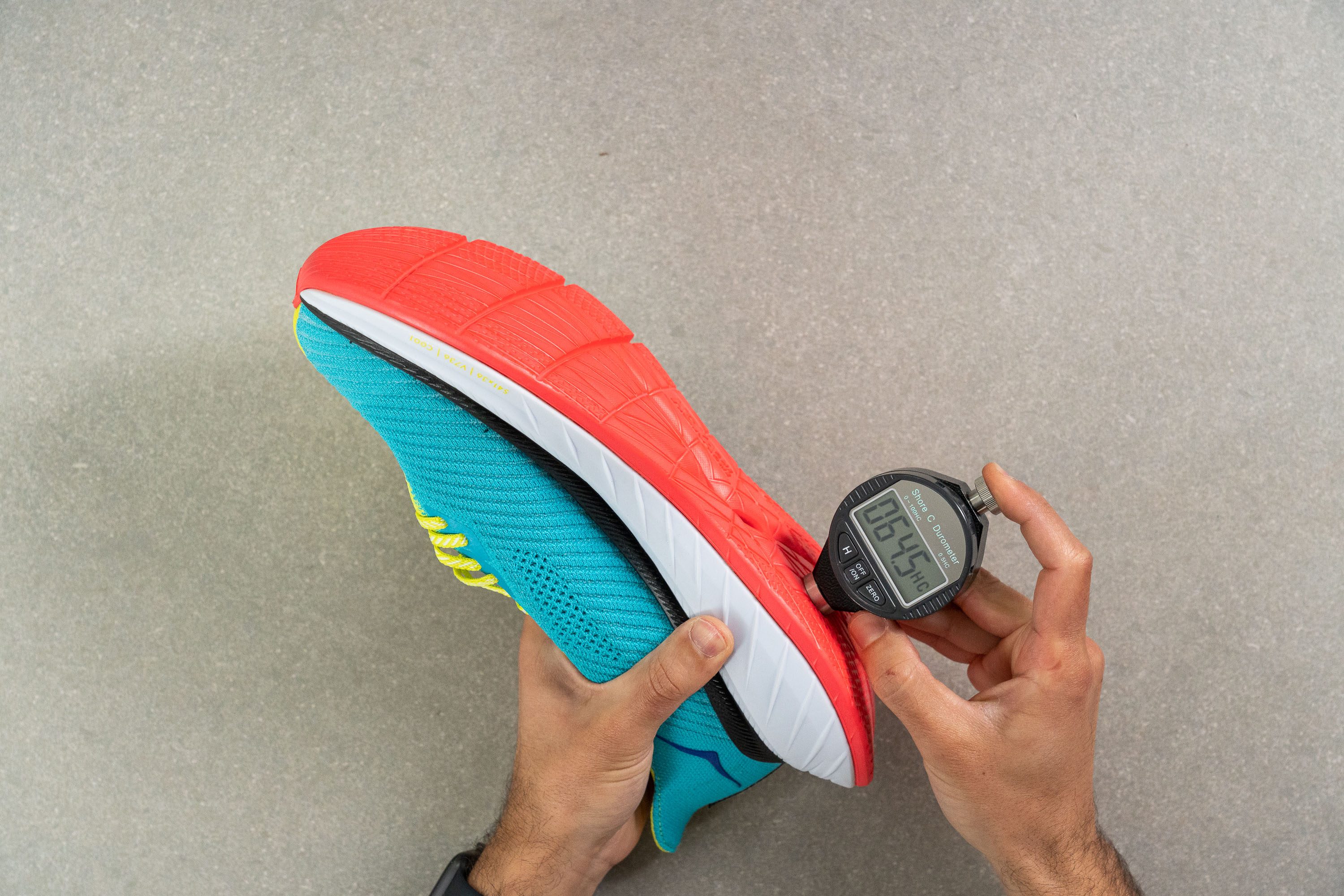Our verdict
Pros
- Unobtrusive carbon plate
- Responsive ride
- Smooth transitions
- Stable
- Durable
- Sock-like collar
- Grippy
Cons
- Not for wide feet
- Rigid knit upper
- Not enough energy return
Audience verdict
Comparison
The most similar running shoes compared
+ + Add a shoe | |||||
|---|---|---|---|---|---|
| Audience score | 82 Good! | 87 Great! | 86 Good! | 89 Great! | |
| Price | £180 | £230 | £185 | £150 | |
| Pace | CompetitionTempo | Competition | Daily runningTempo | Tempo | |
| Shock absorption | Moderate | High | High | High | |
| Energy return | Moderate | High | High | Moderate | |
| Traction | High | High | High | High | |
| Arch support | Neutral | Neutral | Neutral | Neutral | |
| Weight lab Weight brand | 8.4 oz / 239g 8.5 oz / 242g | 7.8 oz / 220g 7.7 oz / 218g | 11.1 oz / 315g 10.8 oz / 306g | 9.5 oz / 268g 9.5 oz / 269g | |
| Lightweight | ✓ | ✓ | ✗ | ✗ | |
| Drop lab Drop brand | 11.0 mm 5.0 mm | 9.5 mm 8.0 mm | 9.2 mm 5.0 mm | 10.1 mm 10.0 mm | |
| Strike pattern | Heel | HeelMid/forefoot | HeelMid/forefoot | Heel | |
| Size | Slightly large | True to size | True to size | Slightly small | |
| Midsole softness | Soft | Balanced | Soft | Soft | |
| Difference in midsole softness in cold | Small | Small | Small | Normal | |
| Toebox durability | - | Good | Good | Decent | |
| Heel padding durability | - | Good | Good | Decent | |
| Outsole durability | - | Good | Good | Decent | |
| Breathability | Moderate | Breathable | Breathable | Moderate | |
| Width / fit | Narrow | Medium | Narrow | Narrow | |
| Toebox width | Medium | Medium | Narrow | Narrow | |
| Stiffness | Stiff | Stiff | Stiff | Stiff | |
| Torsional rigidity | Stiff | Stiff | Stiff | Stiff | |
| Heel counter stiffness | Flexible | Flexible | Stiff | Flexible | |
| Plate | Carbon plate | Carbon plate | Carbon plate | Carbon plate | |
| Rocker | ✓ | ✓ | ✓ | ✗ | |
| Heel lab Heel brand | 35.0 mm 32.0 mm | 38.1 mm 40.0 mm | 46.3 mm 49.0 mm | 37.4 mm 39.0 mm | |
| Forefoot lab Forefoot brand | 24.0 mm 27.0 mm | 28.6 mm 32.0 mm | 37.1 mm 44.0 mm | 27.3 mm 29.0 mm | |
| Widths available | Normal | Normal | Normal | NormalWide | |
| Orthotic friendly | ✓ | ✓ | ✓ | ✓ | |
| Season | All seasons | SummerAll seasons | SummerAll seasons | All seasons | |
| Removable insole | ✓ | ✓ | ✓ | ✓ | |
| Ranking | #279 Bottom 25% | #143 Top 39% | #172 Top 47% | #115 Top 31% | |
| Popularity | #167 Top 45% | #33 Top 9% | #71 Top 20% | #55 Top 15% |
Who should buy
The Hoka Carbon X 3 is a super shoe that we believe is great for:
- marathoners who want to finish the race instead of setting PRs
- ultra distances in moderate tempo to faster paces
- runners who want a smooth and easy ride during long runs
- those who prefer a firm ride for training runs
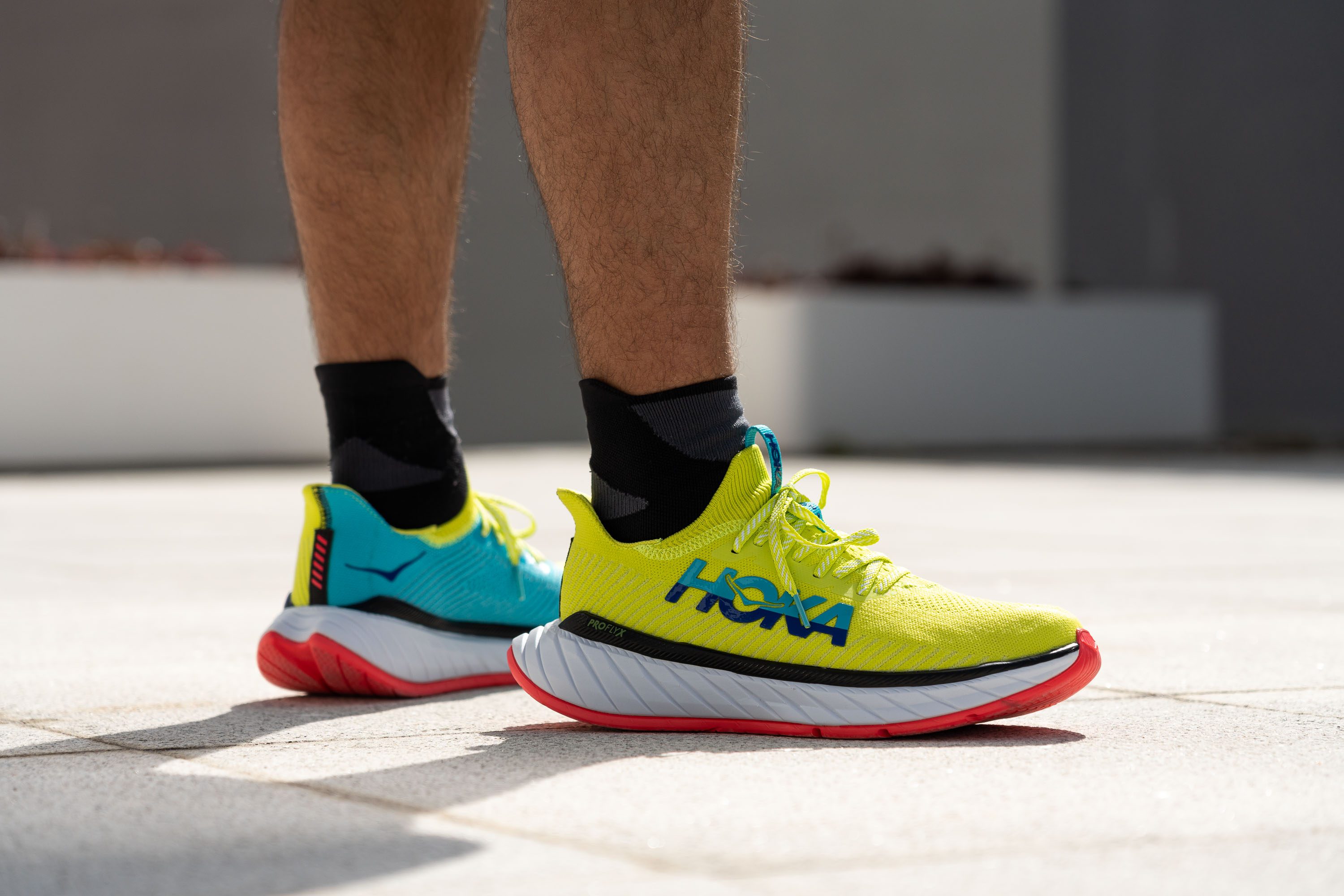
Who should NOT buy
The Carbon X 3 is a pass for runners who want a racer for short distances. It's on the heavier side; that's why.
If you want something fast and light for such a distance, consider the ASICS Metaspeed Edge+ (7.3 oz). And if you want the ultimate energy return from Hoka, go for the Rocket x2.
Cushioning
Shock absorption
The Carbon X 3 includes a carbon plate, but without a true high-end foam, it simply can’t qualify as a supershoe. We got our first glimpse of that issue with the low shock absorption this shoe offers—only 118 SA in the heel and 97 SA in the forefoot.

| Hoka Carbon X 3 | 118 SA |
| Average | 129 SA |
Energy return
Using our energy return machine with the ASTM F1976 standard, we confirmed that just 56.6% of energy comes back, falling way short of the 70% mark reached by every real supershoe in our lab.
| Hoka Carbon X 3 | 56.6% |
| Average | 58.5% |
Heel stack
Stack heights gone wrong! Officially, the Carbon X 3 has a heel stack height of 32 mm. However, we got a different result in our lab - 35 mm.
On one hand, that means even more cushioning (yay!), but the higher heel also affects the shoe's drop... More on that below.
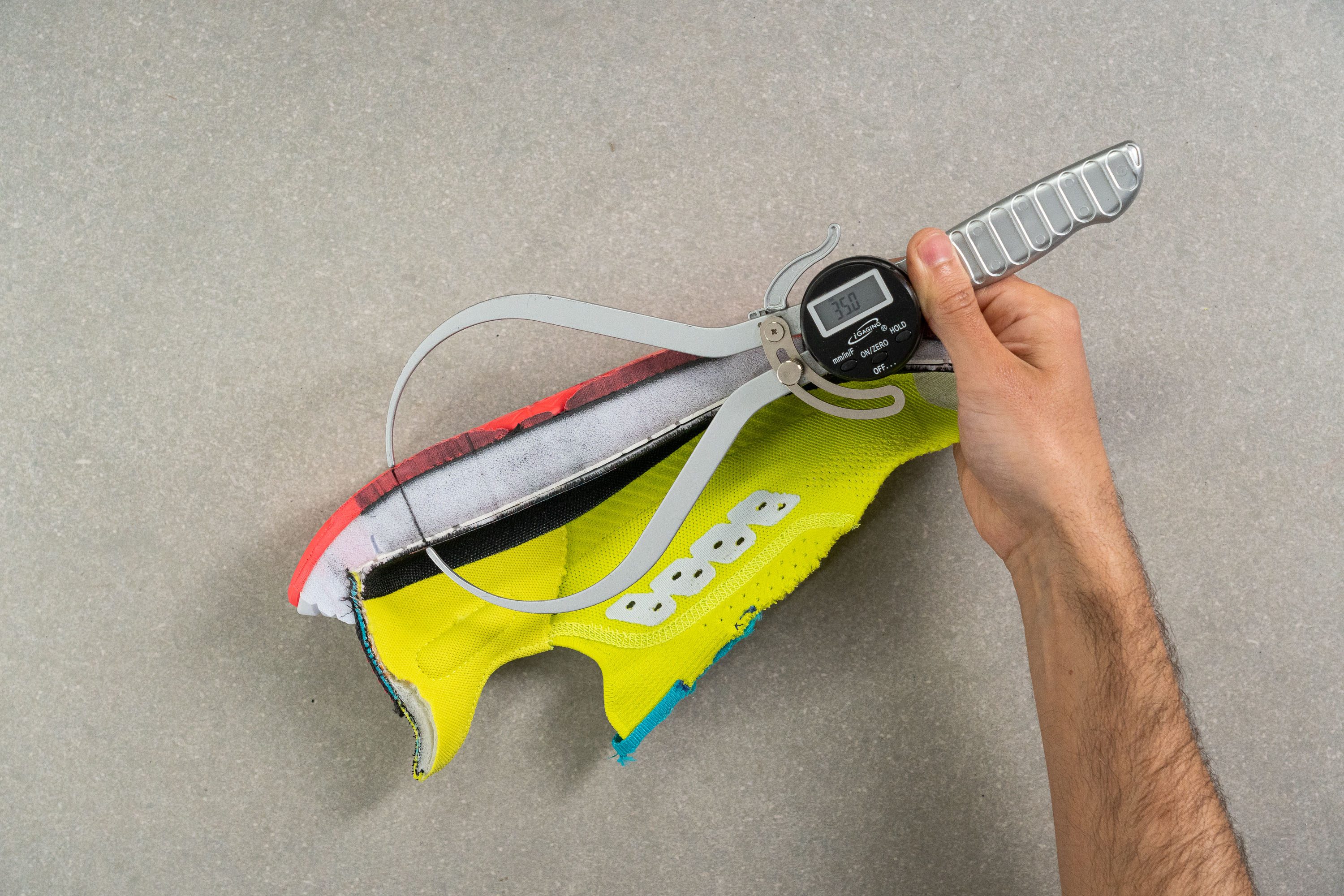
| Hoka Carbon X 3 | 35.0 mm |
| Average | 34.8 mm |
Forefoot stack
The forefoot stack height actually turned out to be lower than stated: 24 mm over the official 27 mm.
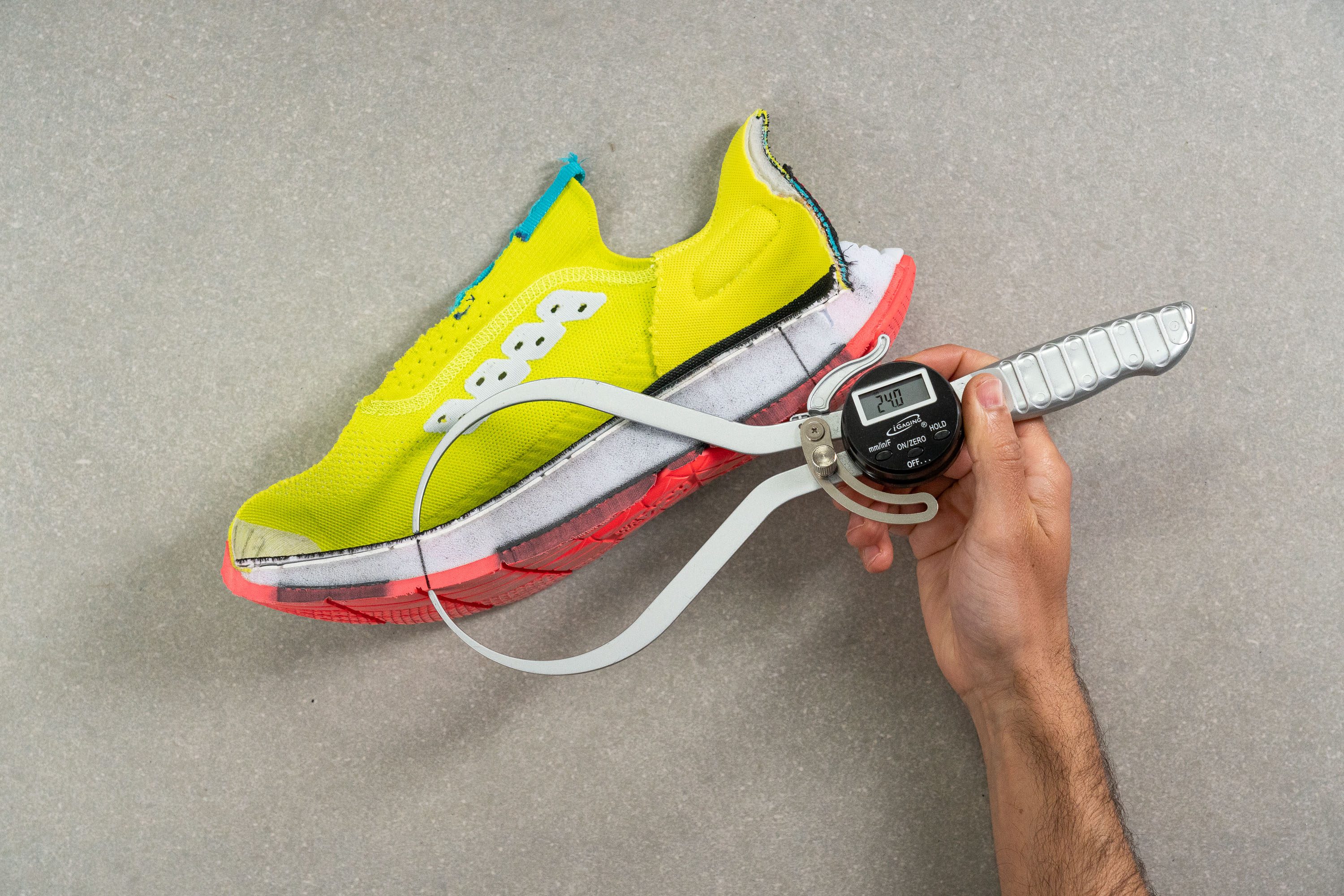
| Hoka Carbon X 3 | 24.0 mm |
| Average | 26.2 mm |
Drop
The measurements mentioned above give us a heel-to-toe drop that is completely different from what the brand says. It's not 5 mm, but actually 11 mm.
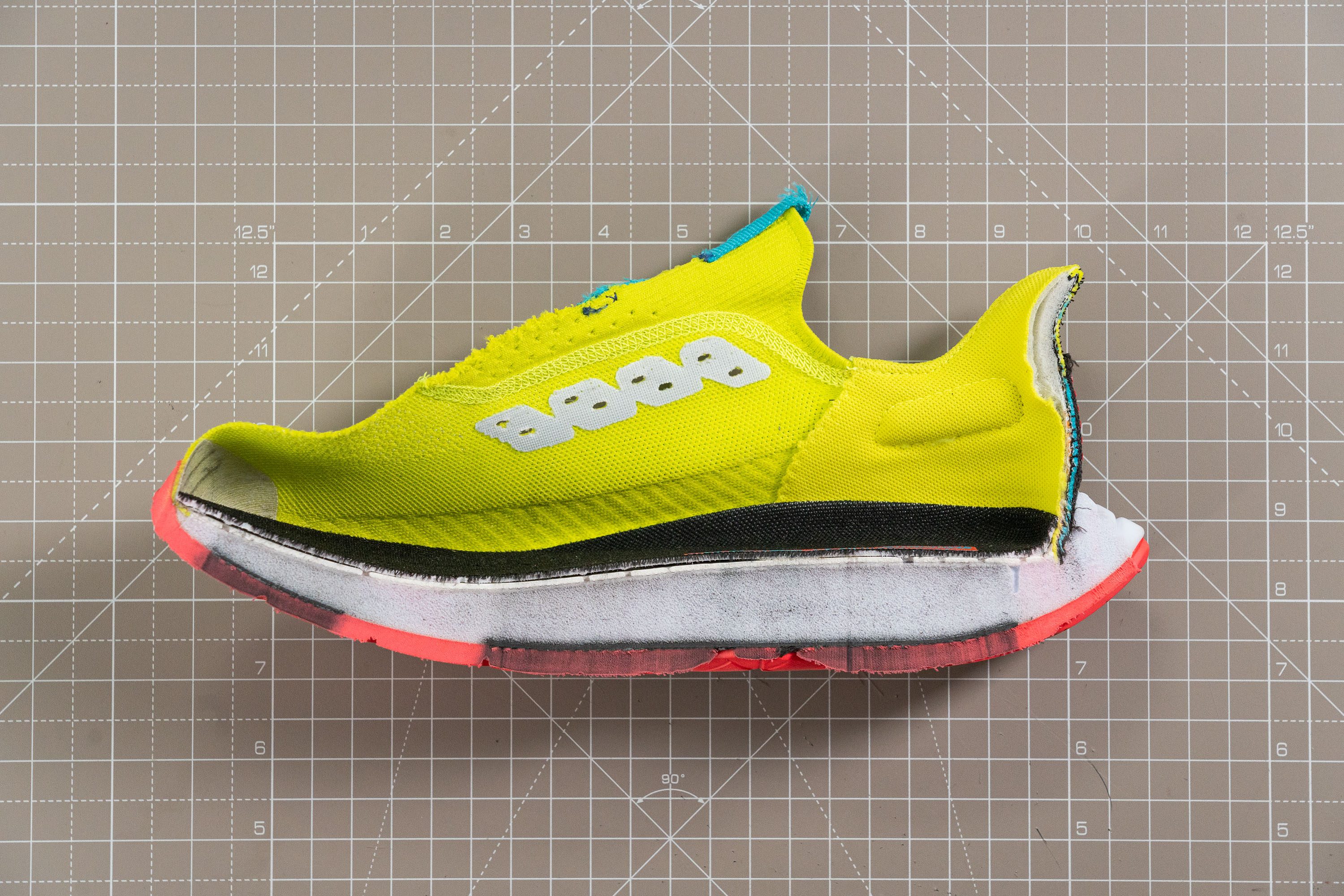
To understand why it's important to know the drop, consider that different drops affect muscles, tendons, and joints in different ways. Higher drops (8-14 mm) load more hips and knees, whereas low drops (0-5 mm) make calves and Achilles tendons work more.
So, if you are expecting a 5mm heel drop in the Carbon X 3, it is going to be a huge disappointment!
| Hoka Carbon X 3 | 11.0 mm |
| Average | 8.6 mm |
Midsole softness
The shoe's plate is not very stiff and the midsole is a touch more forgiving than the Carbon X 2.
It's true that the foam used in the midsole is soft. Actually, with a durometer reading of 19.0 HA, it is 26% softer than average. Yet, due to the presence of the plate, it is not an extremely soft shoe, it is balanced.
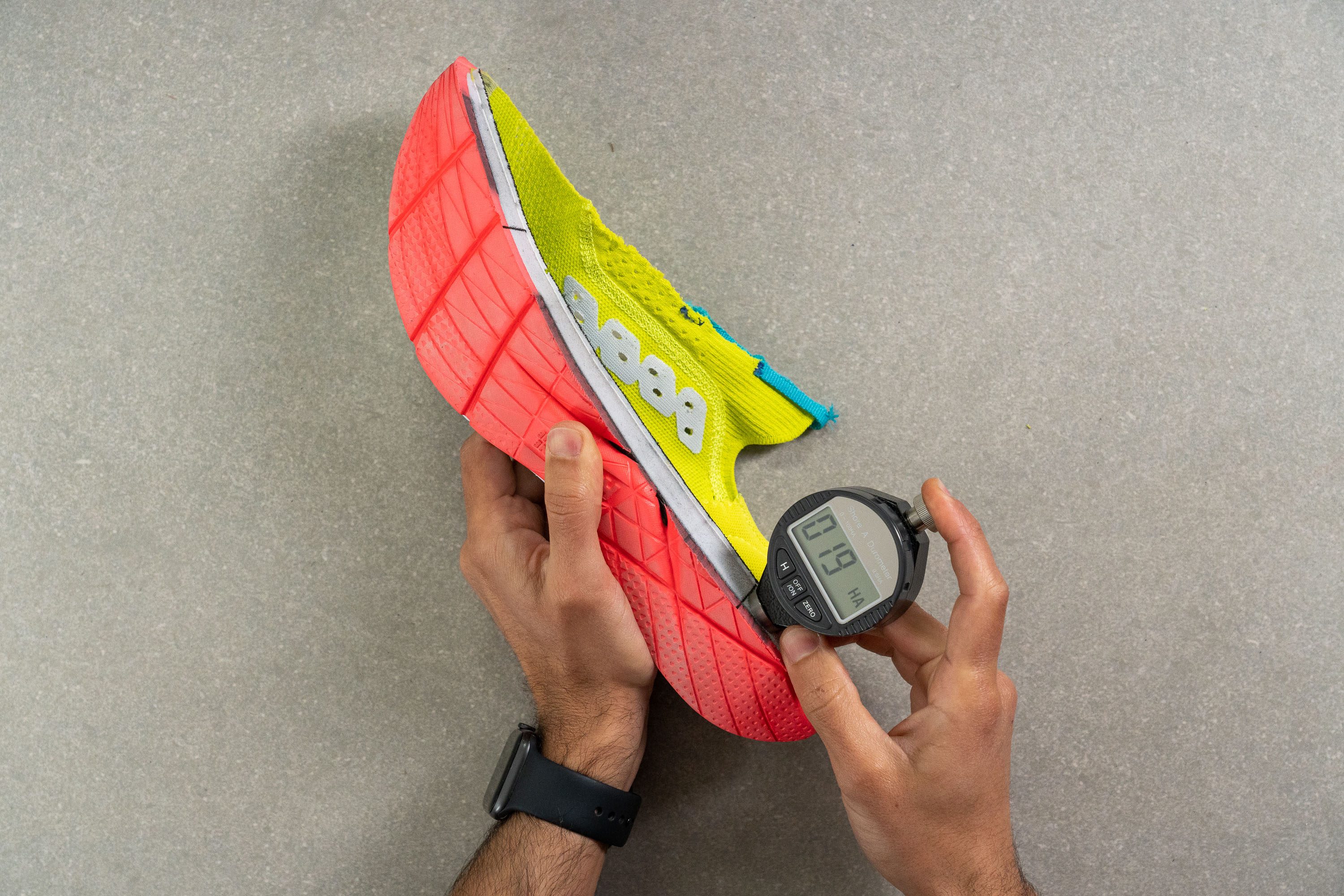
| Hoka Carbon X 3 | 19.0 HA |
| Average | 20.4 HA |
Ride
Seamless would be the best word to describe the Hoka Carbon X 3's ride. Because of its meta-rocker, rolling forward felt effortless to us.
Thanks to the Hoka Carbon X 3's carbon plate, we felt supported from the first mile down to the last. Our feet and legs never felt strained while running in this Hoka shoe. This is also one of the reasons why we approve of it as a long-distance racer.
Size and fit
Size
Hoka Carbon X 3 fits slightly large (78 votes).
Width / Fit
Based on our measurements, the shoe's toebox is notably narrower than average. At the widest part, our calliper shows only 92.6 mm.
However, this measurement aligns with a competition shoe, especially from Hoka—a brand widely renowned for its snug-fitting running shoes.
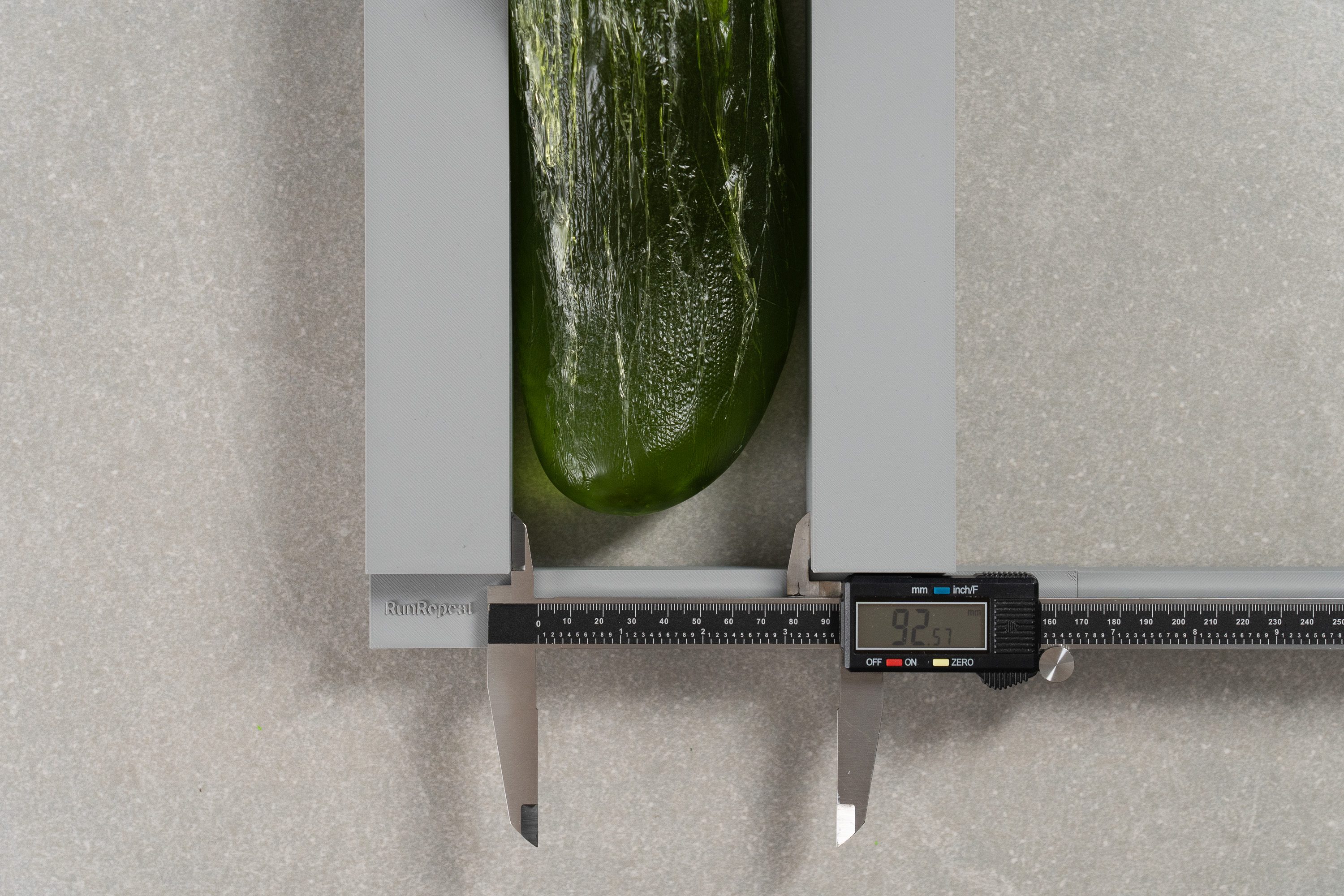
| Hoka Carbon X 3 | 92.6 mm |
| Average | 95.1 mm |
Toebox width
The shoe's toebox also narrows down at the big toe. Measuring the width here returned only 72.3 mm which won't please those with wide feet.
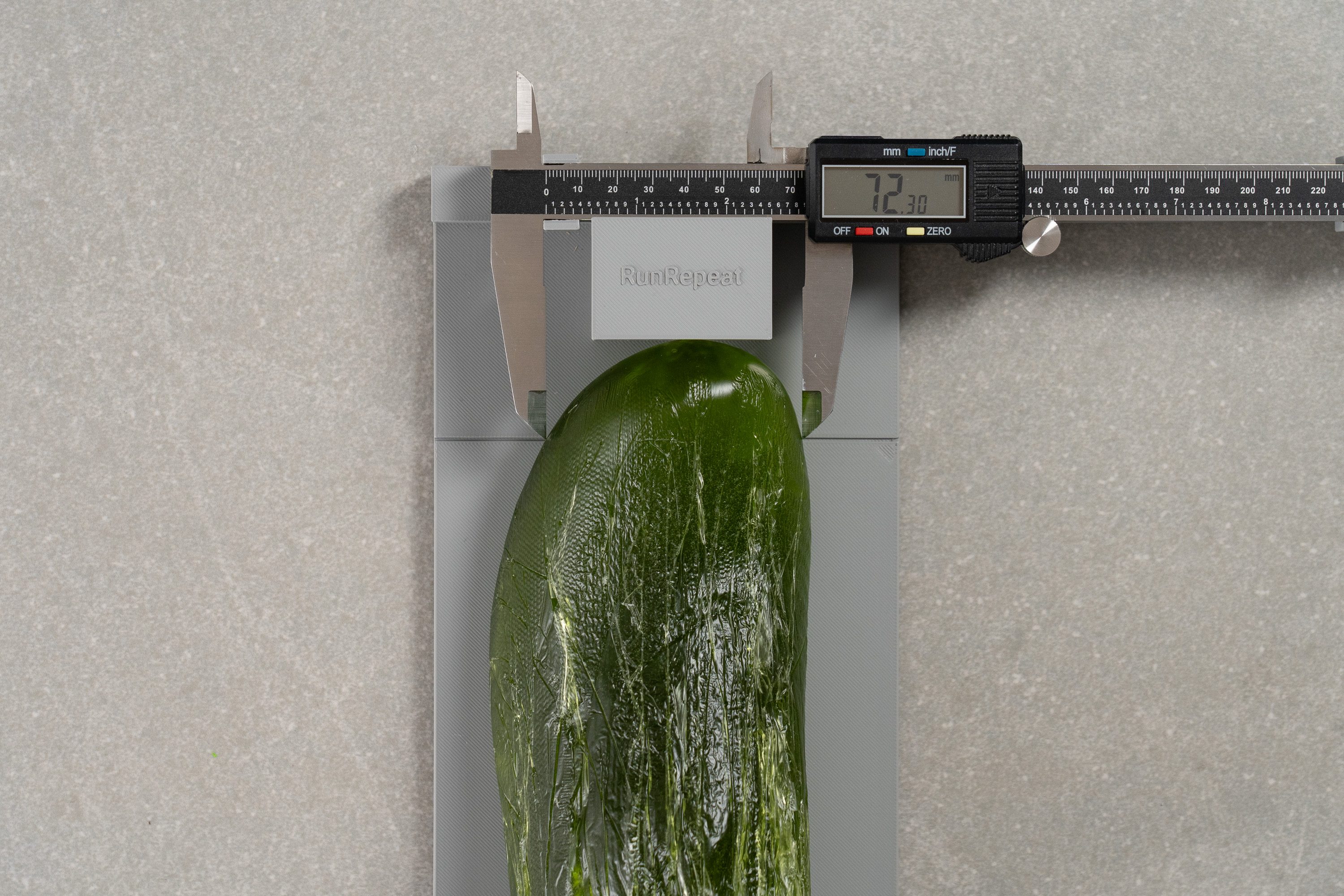
| Hoka Carbon X 3 | 72.3 mm |
| Average | 73.3 mm |
Toebox height
In our experience, the toebox height of the Carbon X 3 is more generous than anticipated. Measuring 30.7 mm, it provides a surprisingly spacious feel, offering ample vertical room.
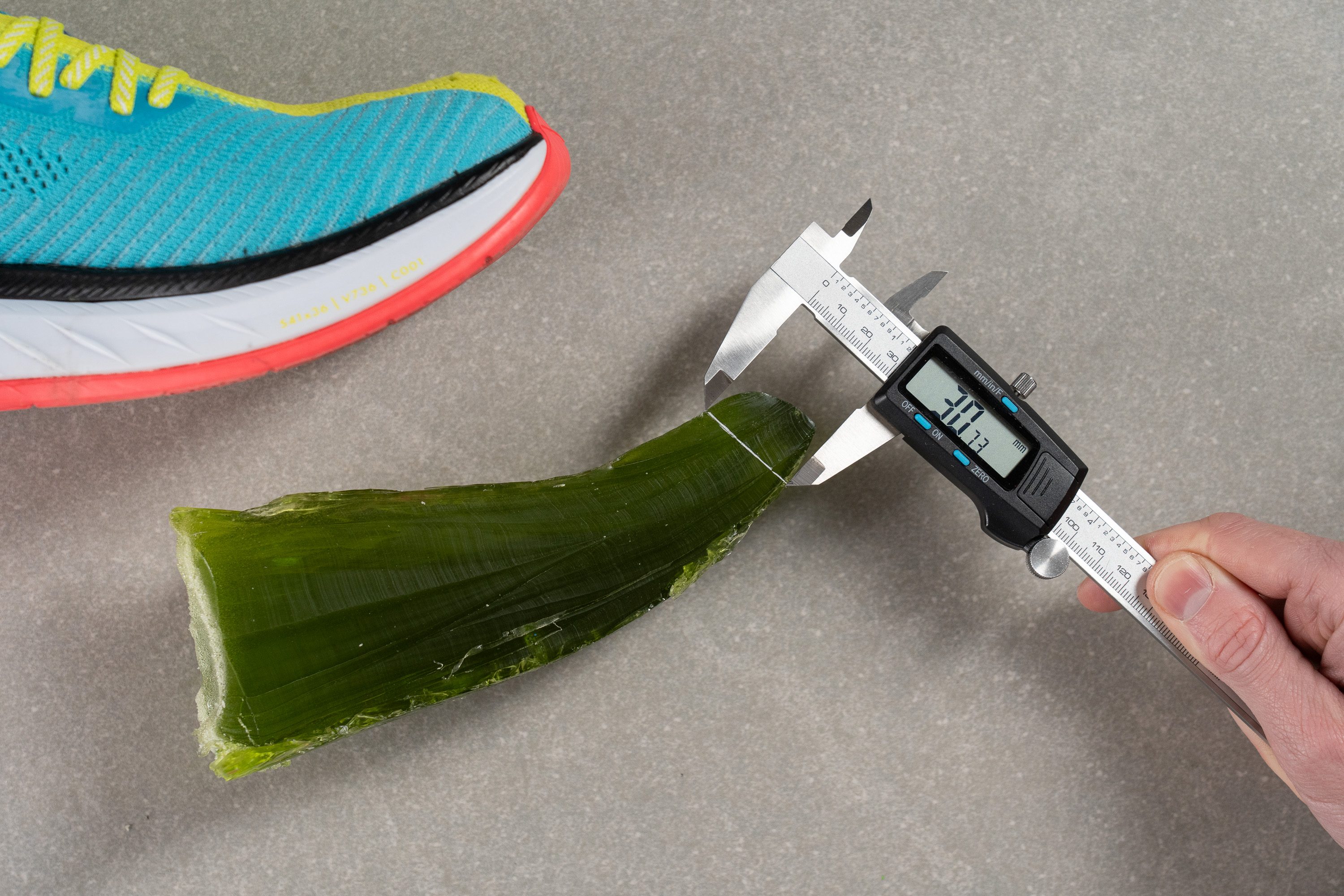
| Hoka Carbon X 3 | 30.7 mm |
| Average | 27.1 mm |
Traction / Grip
On dirt, gravel, crushed rock, wet, and dry surfaces, the shoe bites.

Traction test
We tested the Hoka Carbon X 3 on wet concrete and measured a grip score of 0.51. That’s a great result, especially for a racing-focused shoe with minimal rubber coverage and a lightweight build.
It provides reliable traction on dry pavement and enough bite to stay safe when rain hits. Therefore, for us it’s a race-ready, no-excuses outsole—ideal for runners who show up for races even when the sky’s pouring.
| Hoka Carbon X 3 | 0.51 |
| Average | 0.48 |
Outsole design
The Carbon X 3 skips traditional rubber in favour of a full-length rubberized foam outsole. This bright red layer keeps the shoe lightweight and flexible while still offering good grip.

Flexibility / Stiffness
The HOKA Carbon X 3 is one of the best carbon-plated shoes for runners who don’t want extreme stiffness, as it scored just slightly above average in our 30-degree bend test.
Of course, that comes with trade-offs. The main one for us is the absence of the ultra-snappy ride found in most modern supershoes.
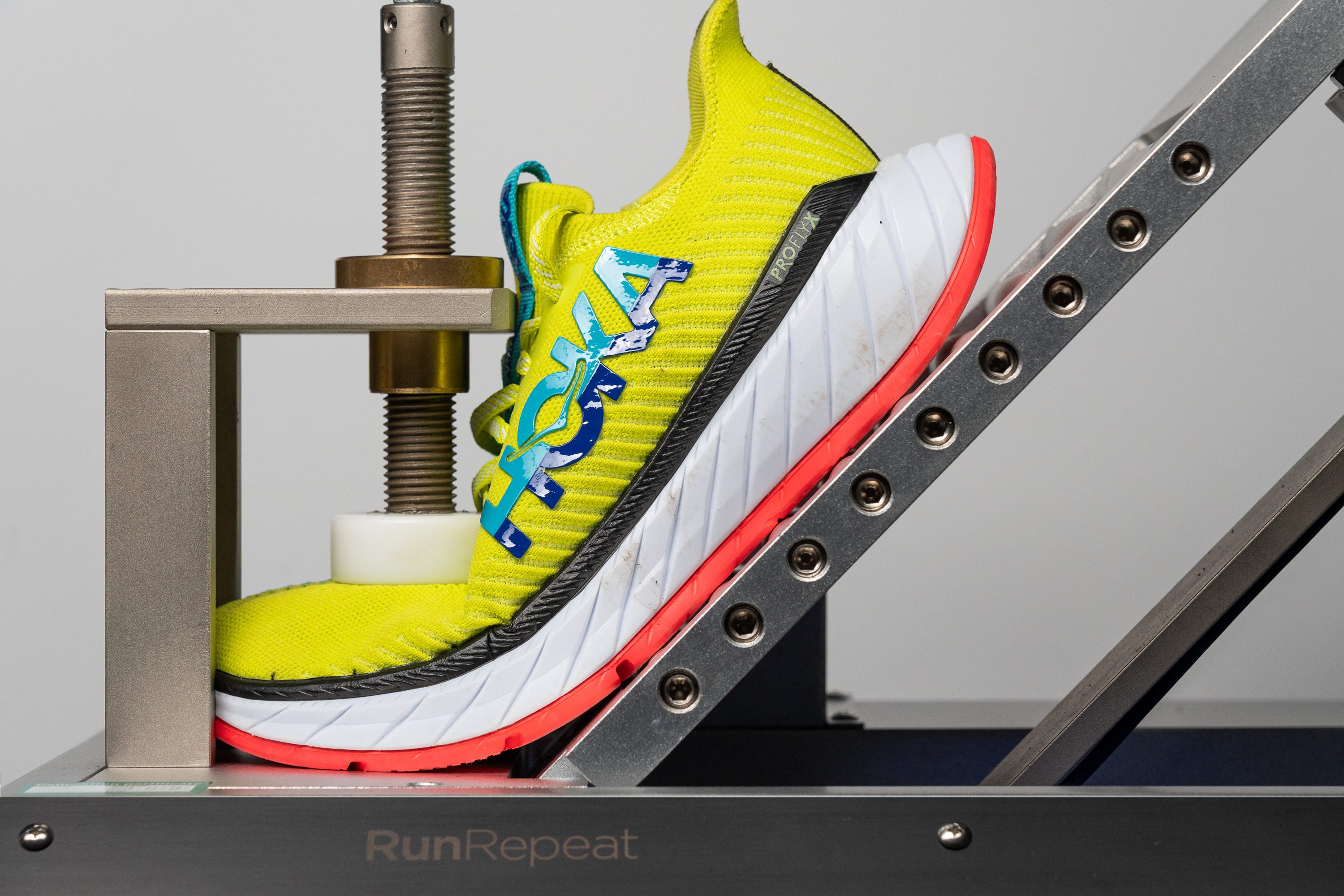
| Hoka Carbon X 3 | 17.9N |
| Average | 15.3N |
Weight
We weighed the shoe on our scale, and it returned 8.4 oz (239g). That's a whole ounce lighter than average!
But, of course, if we compare it to tempo training shoes only (8.5 oz/237g), the Hoka Carbon X 3 is right about average.
| Hoka Carbon X 3 | 8.4 oz (239g) |
| Average | 9.3 oz (264g) |
Breathability
We found the knit upper's ventilation to be quite good. Our feet remained cool and dry even under warm weather. However, it is not the most breathable trainer on the market, receiving only 3 out of 5 in our smoke-machine test. Expect decent airflow but not on a hot summer day.
The second test we carried out confirmed the previous results: we put the upper against light, and it clearly showed that is well-perforated, and therefore airy.
| Hoka Carbon X 3 | 3 |
| Average | 3.7 |
Stability
Lateral stability test
Contrary to other tempo shoes like the Nike Next% collection, the third version of the Carbon X felt a bit more stable.
Torsional rigidity
We believe that the stability is mostly due to this Hoka shoe's torsional rigidity.
As our manual test shows, the carbon plate makes it very difficult to twist the Carbon X 3 sideways. On a 1-5 scale, where 5 is the stiffest, we gave this shoe a maximum score of 5.
| Hoka Carbon X 3 | 5 |
| Average | 3.5 |
Heel counter stiffness
The shoe's heel counter, on the other hand, has much more give to it.
We gave its stiffness a low score of 2 out of 5, indicating that it's quite bendy and doesn't hold the ankle so rigidly.
| Hoka Carbon X 3 | 2 |
| Average | 2.9 |
Midsole width - forefoot
The platform of the Hoka Carbon X 3 is neither wide nor narrow. It sits right at the average of road running shoes.
Measuring the widest part of its sole in the forefoot, we got 111.2 mm. That's even 2 mm narrower than average.
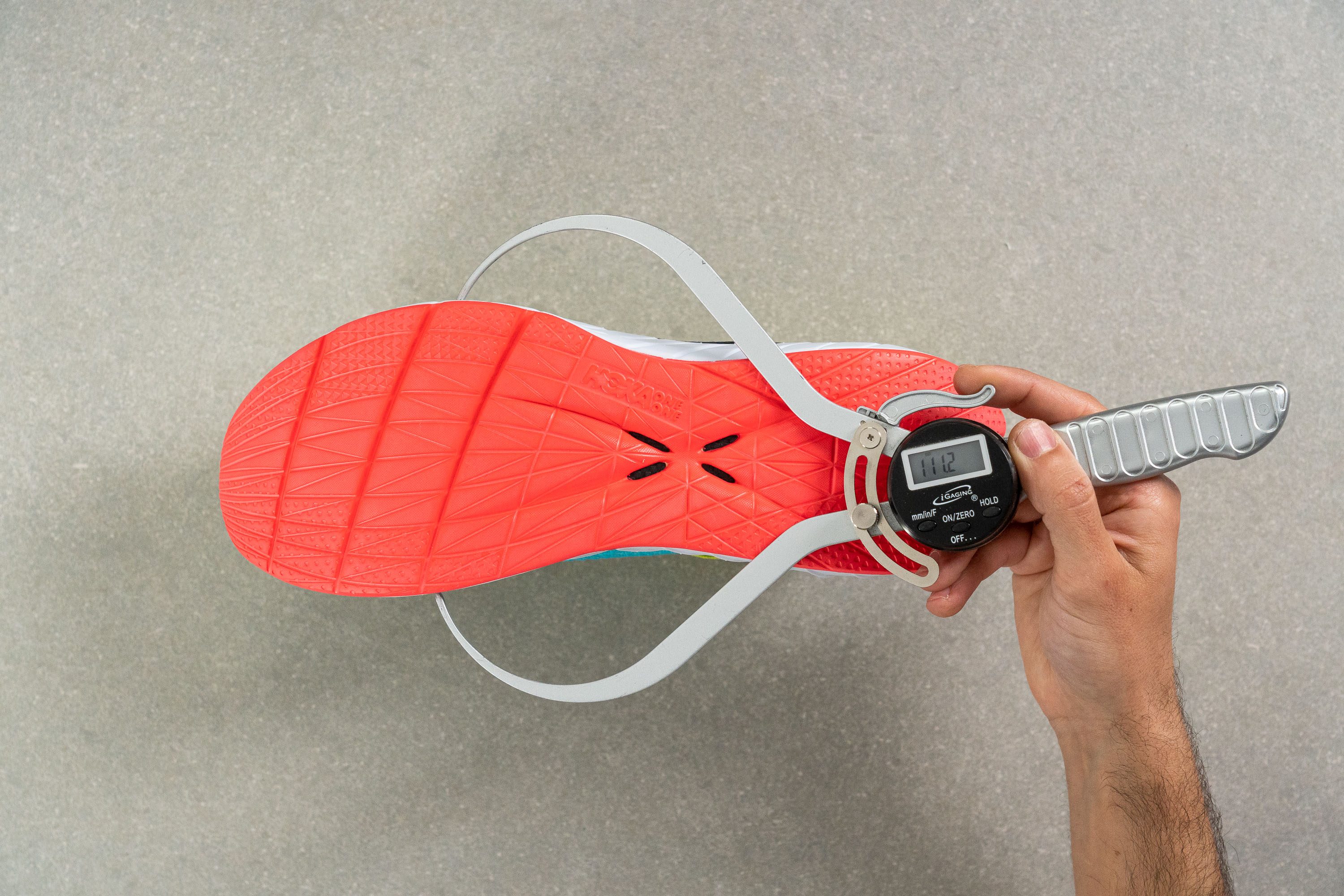
| Hoka Carbon X 3 | 111.2 mm |
| Average | 114.4 mm |
Midsole width - heel
The situation is better in the heel. Our calliper showed 90.1 mm which is precisely the average.
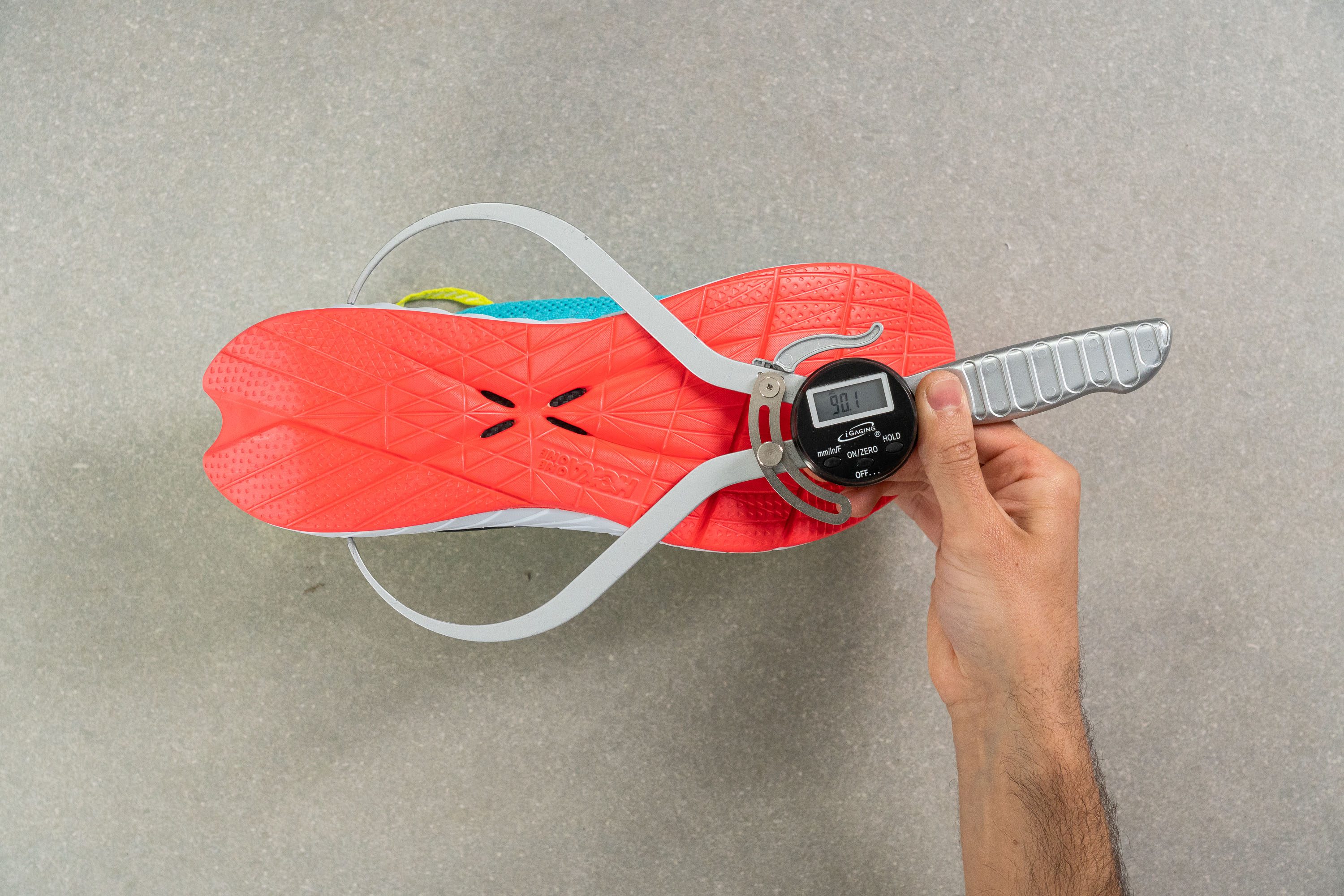
| Hoka Carbon X 3 | 90.1 mm |
| Average | 90.7 mm |
Durability
Outsole hardness
Just like the Hoka Mach 5, the Carbon X 3 makes use of a firm rubberized EVA form at the bottom of its platform. While it helps to save the shoe's weight tremendously, it has consequences for its long-term durability.
Using a durometer to check the firmness of this layer, we got 64.5 HA. That's 25% softer than the road shoe rubbers on average! As soft as it feels upon landing, this compound is doomed to wear out much faster compared to a typical outsole rubber.
| Hoka Carbon X 3 | 64.5 HC |
| Average | 79.2 HC |
Outsole thickness
Because there is no rubber outsole per se, we kept the outsole thickness at 0.0 mm. But if you're wondering how thick the rubberized foam layer is, our calliper showed 7 mm.
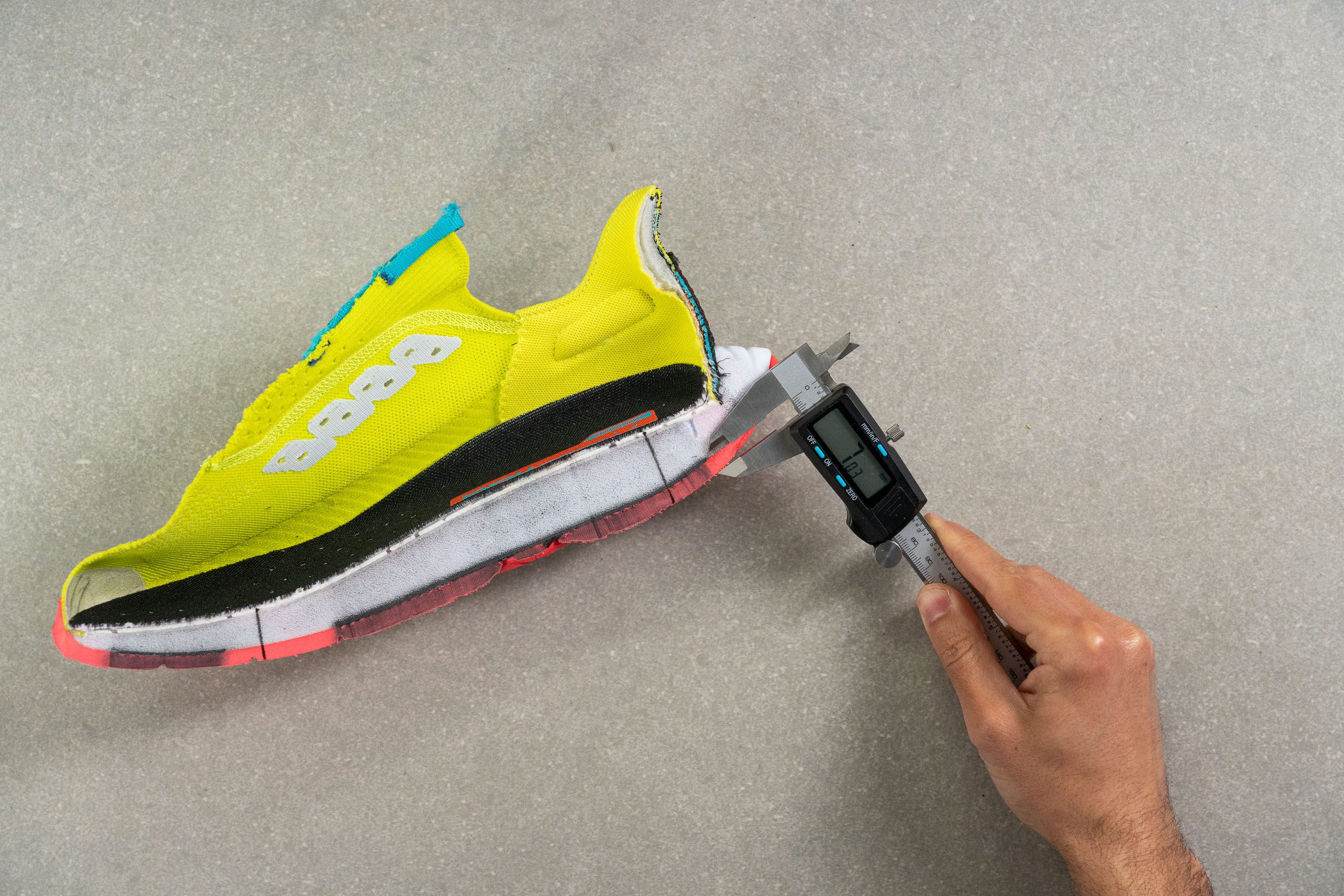
| Hoka Carbon X 3 | 0.0 mm |
| Average | 3.2 mm |
Misc
Insole thickness
This Hoka has a thin insole. Our calliper showed 2.3 mm, while the average for running shoes is around 4.5 mm.
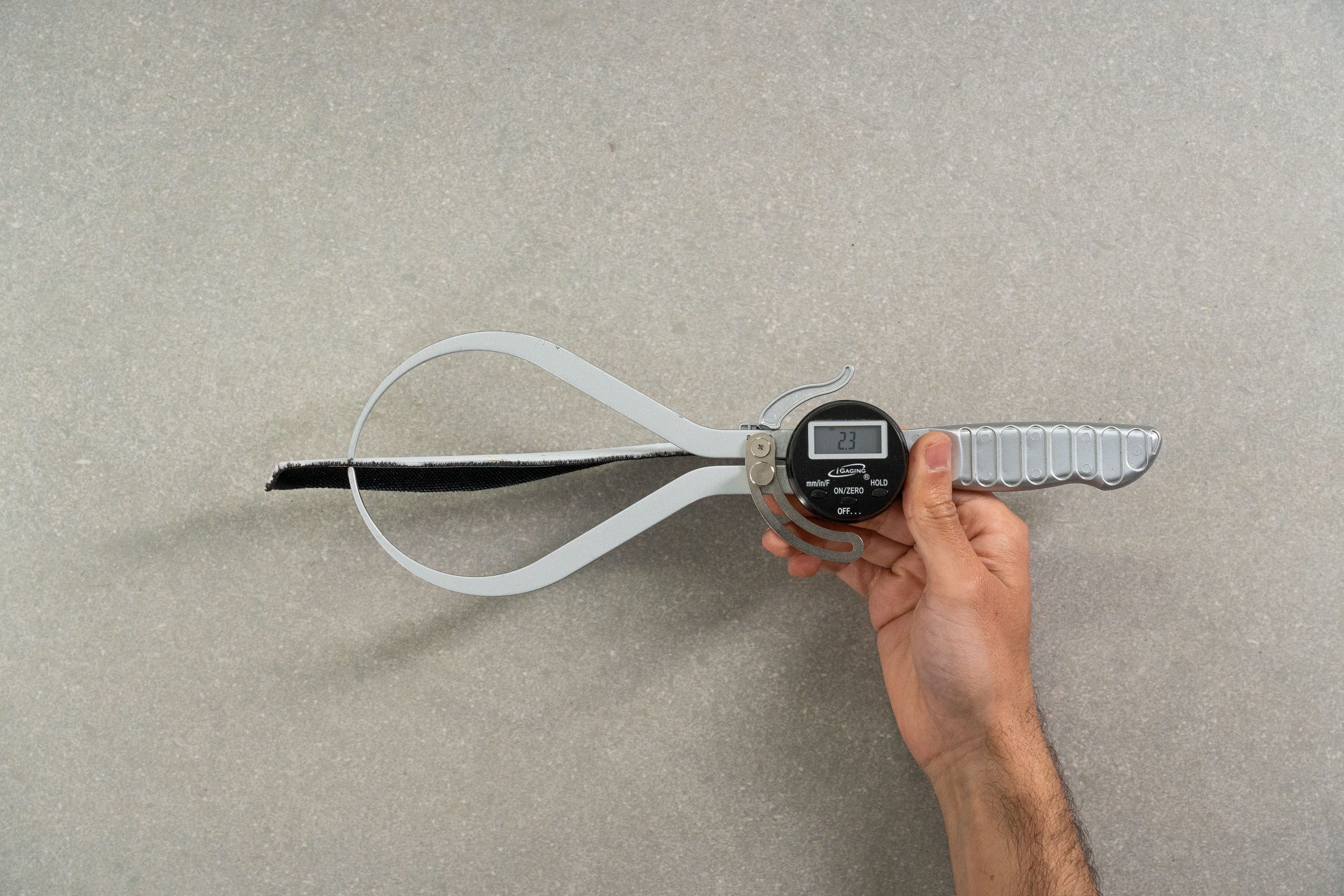
| Hoka Carbon X 3 | 2.3 mm |
| Average | 4.5 mm |
Midsole softness in cold (%)
We put the shoe in the freezer to simulate cold weather conditions and found out that the midsole didn't change much. After 20 minutes, it became only 23.7% firmer, less than the average of 26.9%.
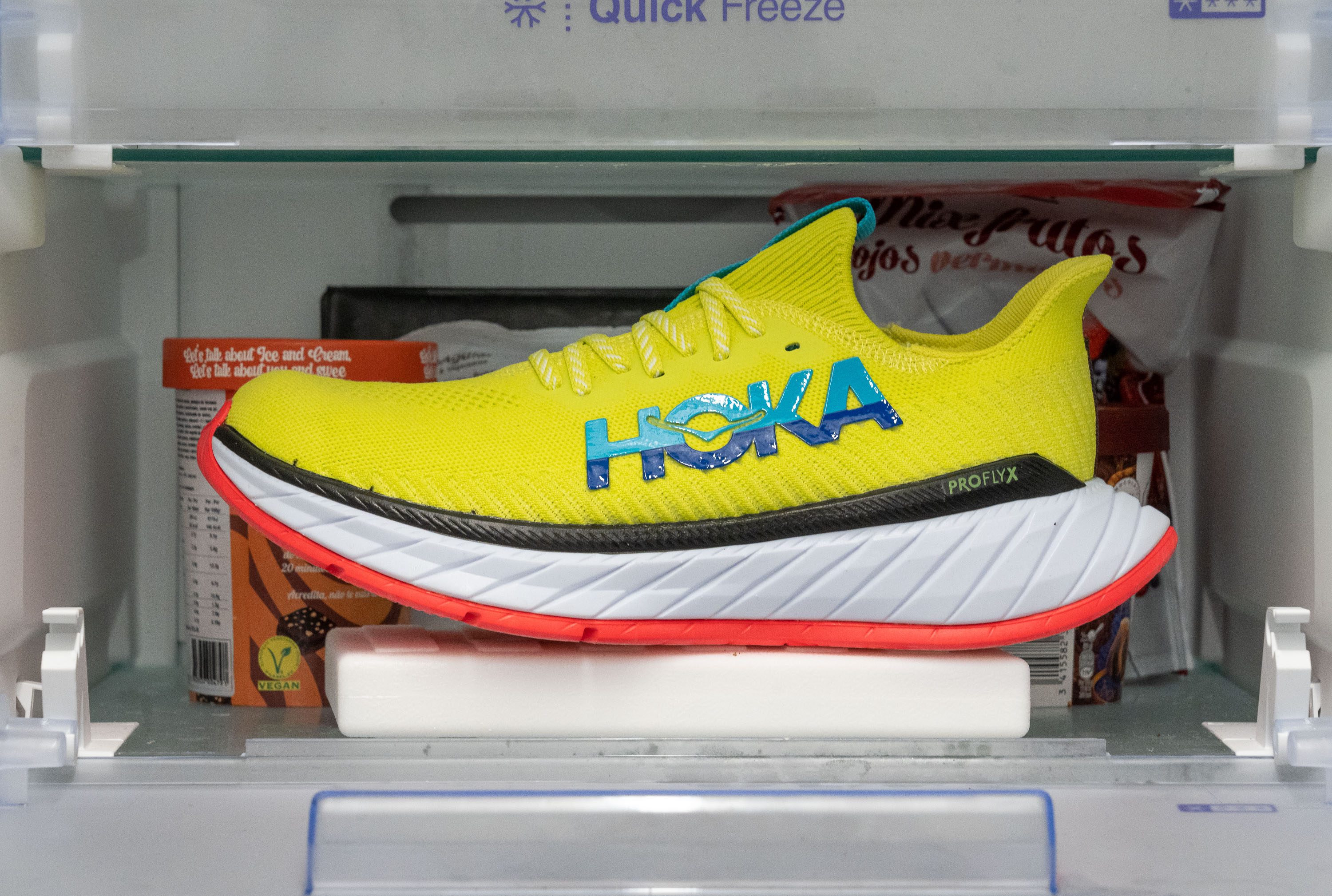
With a durometer measurement of 23.5 HA, it is 30% softer than the other "frozen" foams we've tested!
| Hoka Carbon X 3 | 24% |
| Average | 24% |
Style
It makes a statement. With its huge stack, two-tone colours, and detailed knit pattern, it's hard not to notice the Hoka Carbon X 3.
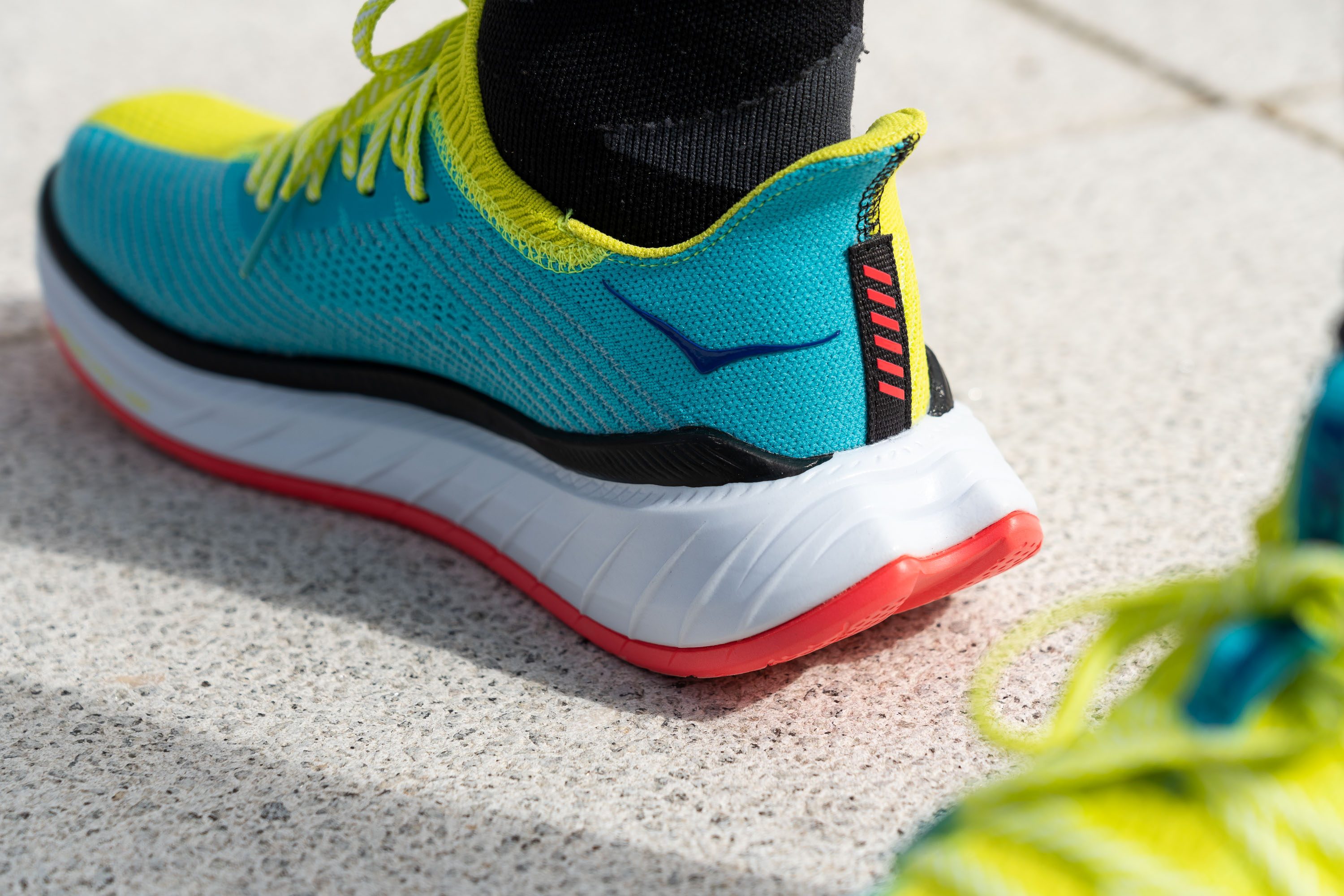
Carbon X 3 vs. 2: Toning down the aggressiveness
These are the most notable changes introduced in the Hoka Carbon X 3:
- The new Profly X midsole offers a softer feel for a more responsive ride.
- For a more flexible wrap, a new knit upper is introduced.
- The Hoka Carbon X 3 also loses 0.2oz (5g), from 8.7oz (247g) to 8.5oz (242g), while maintaining the same rubberized outsole and stack height.
